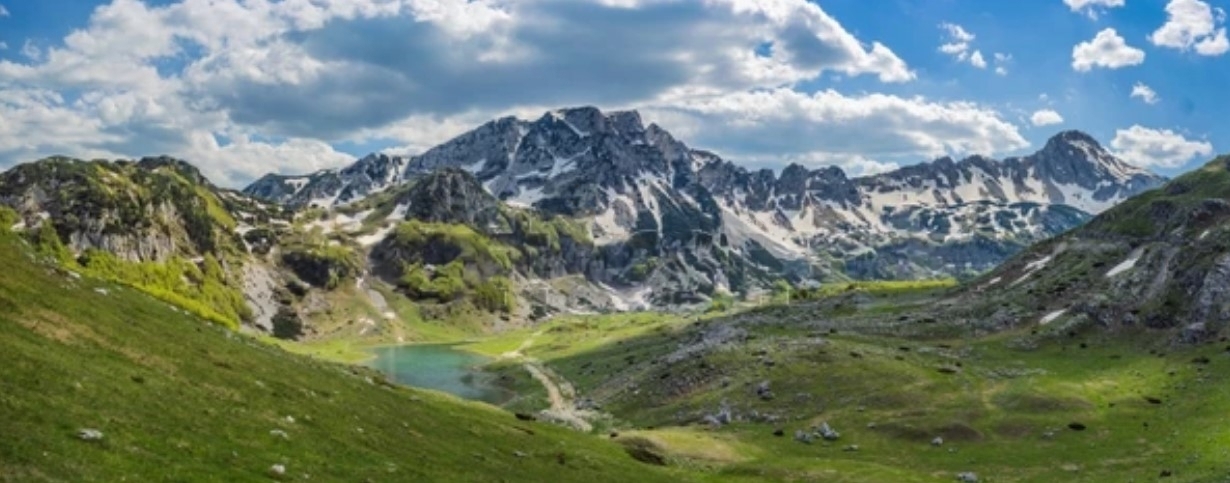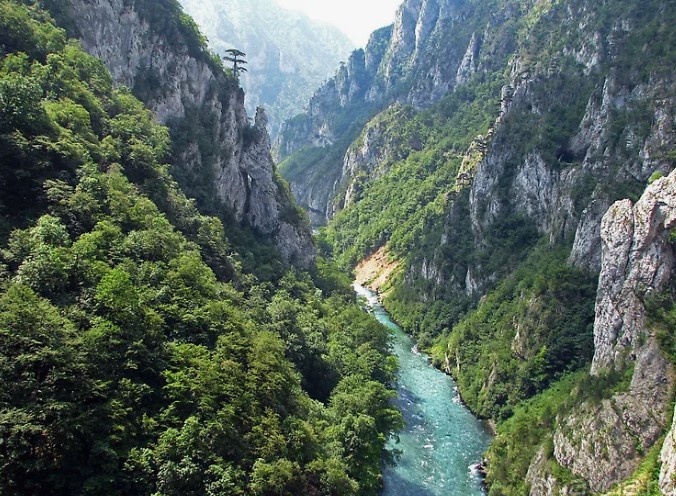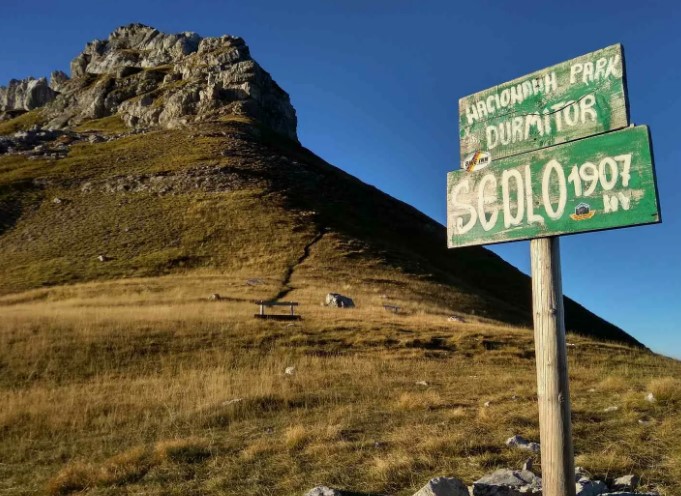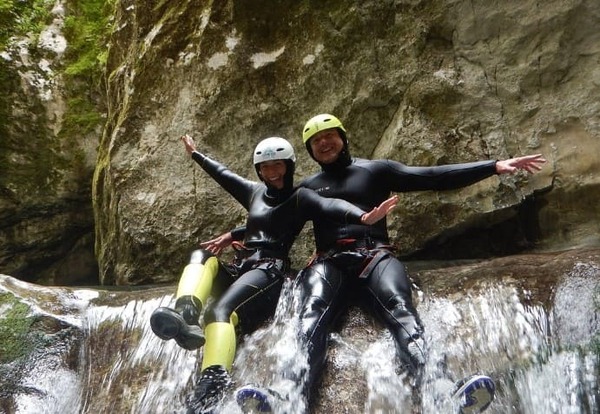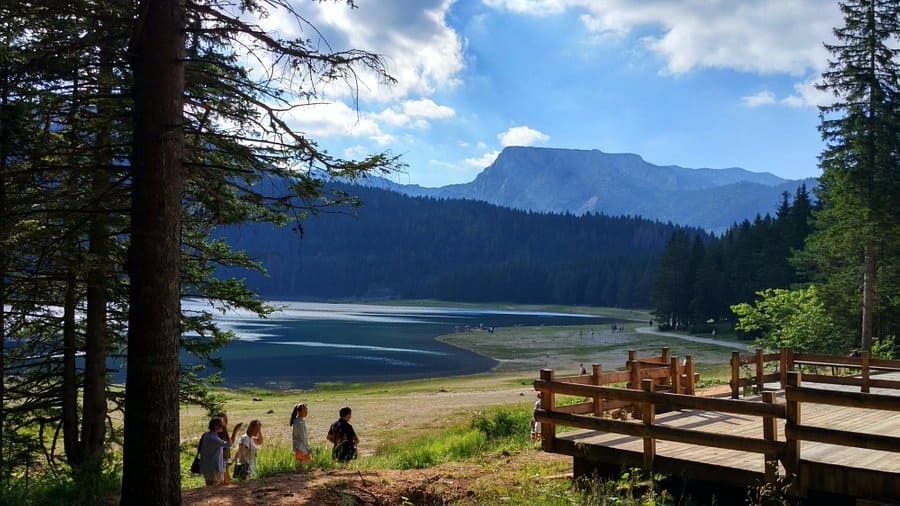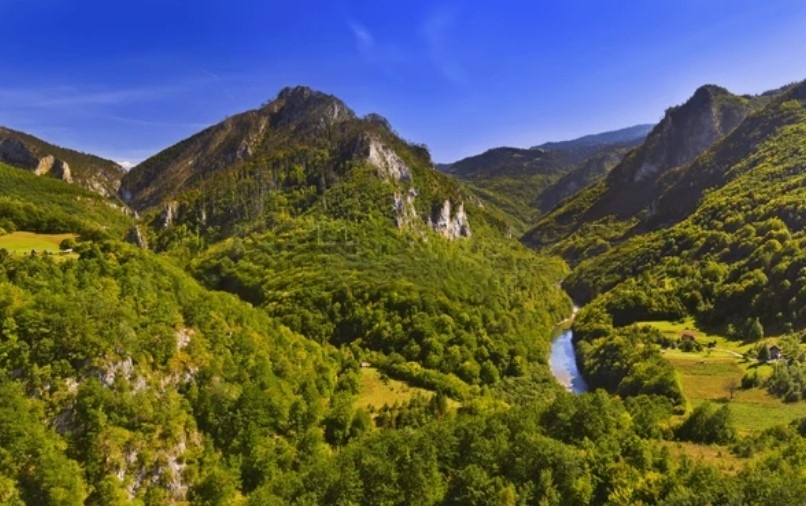Immerse yourself in Montenegro's pristine wilderness - embark on a hiking adventure to the mountains of Durmitor National Park. You'll encounter soft forest paths, crystal-clear glacial lakes, and rugged mountain peaks. This is a place where everyone can find a trail to suit their spirit—from gentle walks to genuine alpine challenges.
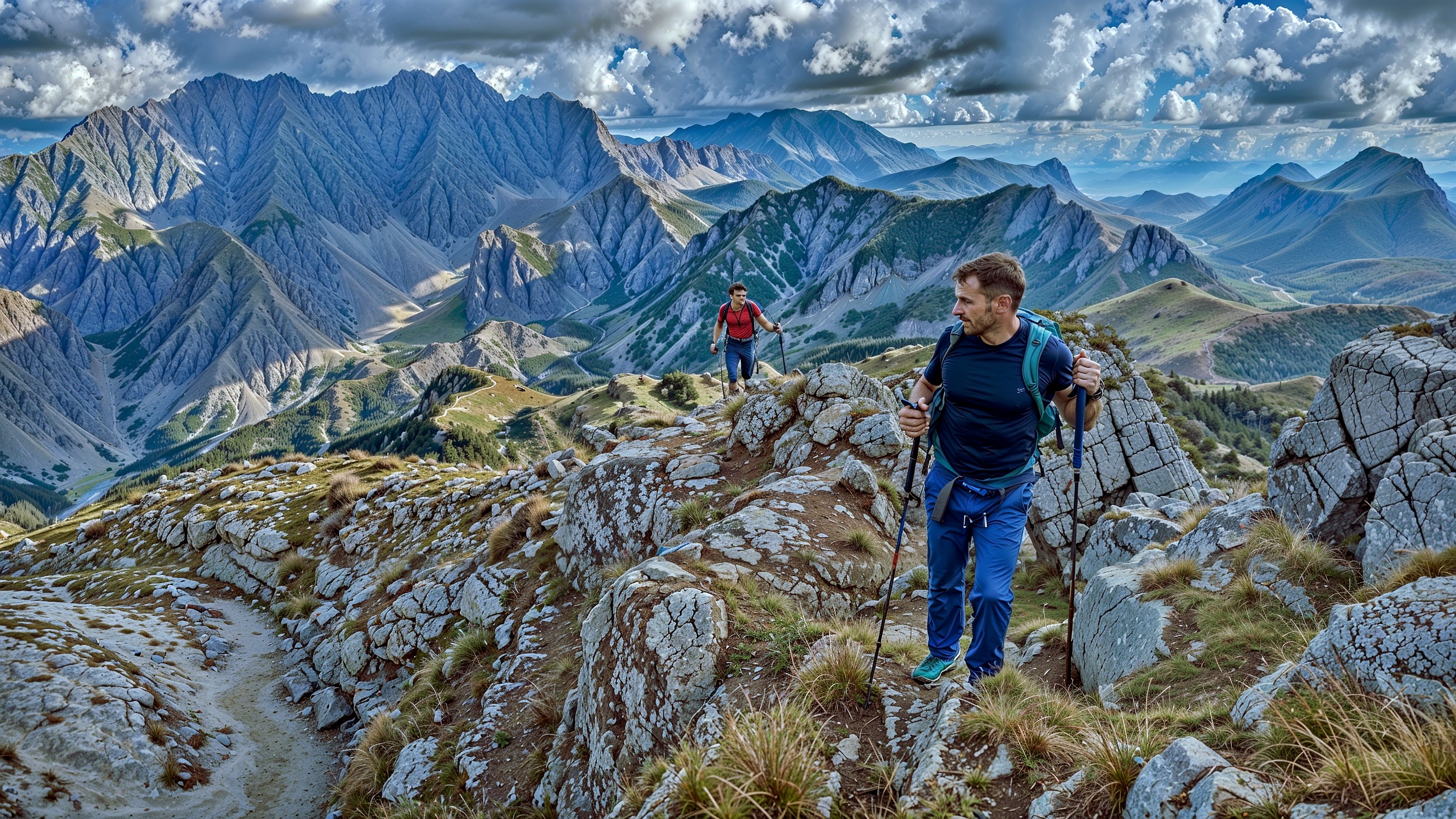
Discover Durmitor from a New Perspective
Durmitor is home to 48 peaks over 2000 meters, deep canyons, pine forests, and glacial lakes. Trekking through this landscape is not merely physical activity, but a true communion with nature and an opportunity to witness the untouched beauty of the Balkans.
This UNESCO World Heritage site encompasses 390 square kilometers of some of Europe's most spectacular mountain scenery. Carved by glaciers and underground streams, the landscape presents a dramatic mixture of towering peaks, deep gorges, and dense coniferous forests. The park's unique karst features create an environment where geological wonders and ecological diversity combine to offer hikers an unparalleled experience of natural beauty.
What distinguishes hiking in Durmitor from many other European mountain destinations is the remarkable contrast between accessibility and wilderness. Well-marked trails lead from comfortable facilities into genuinely remote terrain, allowing visitors to experience profound natural solitude within a relatively short journey from civilization.
Hiking difficulty levels
Routes vary from easy walks to alpine ascents:
For Beginners
-
Black Lake Circuit (Crno Jezero) — A 3.5 km loop with level terrain suitable for the whole family. This well-maintained trail circles Montenegro's largest glacial lake, offering continuously changing perspectives of the water against the backdrop of surrounding peaks. With minimal elevation change and regular benches for resting, this route provides an ideal introduction to Durmitor's beauty.
-
Barno Lake Trail — A gentle 2 km path through pine forest to a picturesque small lake. This route features wooden boardwalks over sensitive wetland areas, making it accessible even after rainfall while protecting the fragile ecosystem. Interpretive signs identify notable plant species and explain the lake's ecological significance.
-
Sušica Lake Viewpoint — An easy 4 km round trip with modest elevation gain leading to panoramic views of the Sušica Canyon and lake. This trail follows an old forestry road for much of its length, providing a wide, stable path suitable for less experienced hikers while still delivering spectacular scenery.
Intermediate Level
-
Ice Cave Route (Ledena Pećina) — A moderate 7 km trek with some steeper sections leading to a fascinating natural ice formation that persists year-round. The path traverses several distinct ecological zones, from forest to alpine meadow, with the final approach requiring some basic scrambling over rocky terrain.
-
Three Lakes Circuit — A half-day 10 km route connecting Black Lake, Snake Lake, and Barno Lake through varied forest and meadow landscapes. This well-designed loop hits several highlights of the park's lower elevations without the technical challenges of the higher peaks, making it perfect for hikers seeking a more substantial experience without extreme difficulty.
-
Škrčko Lakes Trail — A challenging day hike of 14 km round trip to a dramatic high mountain lake basin surrounded by limestone peaks. With approximately 600m of elevation gain, this trail demands good fitness and basic hiking experience, rewarding effort with increasingly spectacular views and a sense of genuine mountain immersion.
Advanced Level
-
Bobotov Kuk Ascent — A demanding climb to Durmitor's highest peak (2523m) with experienced guide accompaniment. This iconic route requires physical stamina, comfort with exposure, and basic scrambling skills to navigate the upper sections. The 360-degree panorama from the summit encompasses Montenegro, Bosnia, and on clear days, distant views into Albania.
-
Durmitor Traverse — A technical multi-day route crossing several peaks above 2000m, requiring alpine experience. This challenging trek follows the spine of the mountain range, combining sections of marked trail with more technical terrain requiring navigation skills and comfort on exposed ridgelines.
-
Škrka Route — A demanding ascent involving some sections of very steep terrain and rock scrambling, recommended only with qualified mountain guides. This less-traveled route offers solitude and pristine wilderness for experienced hikers seeking to escape the more popular trails.
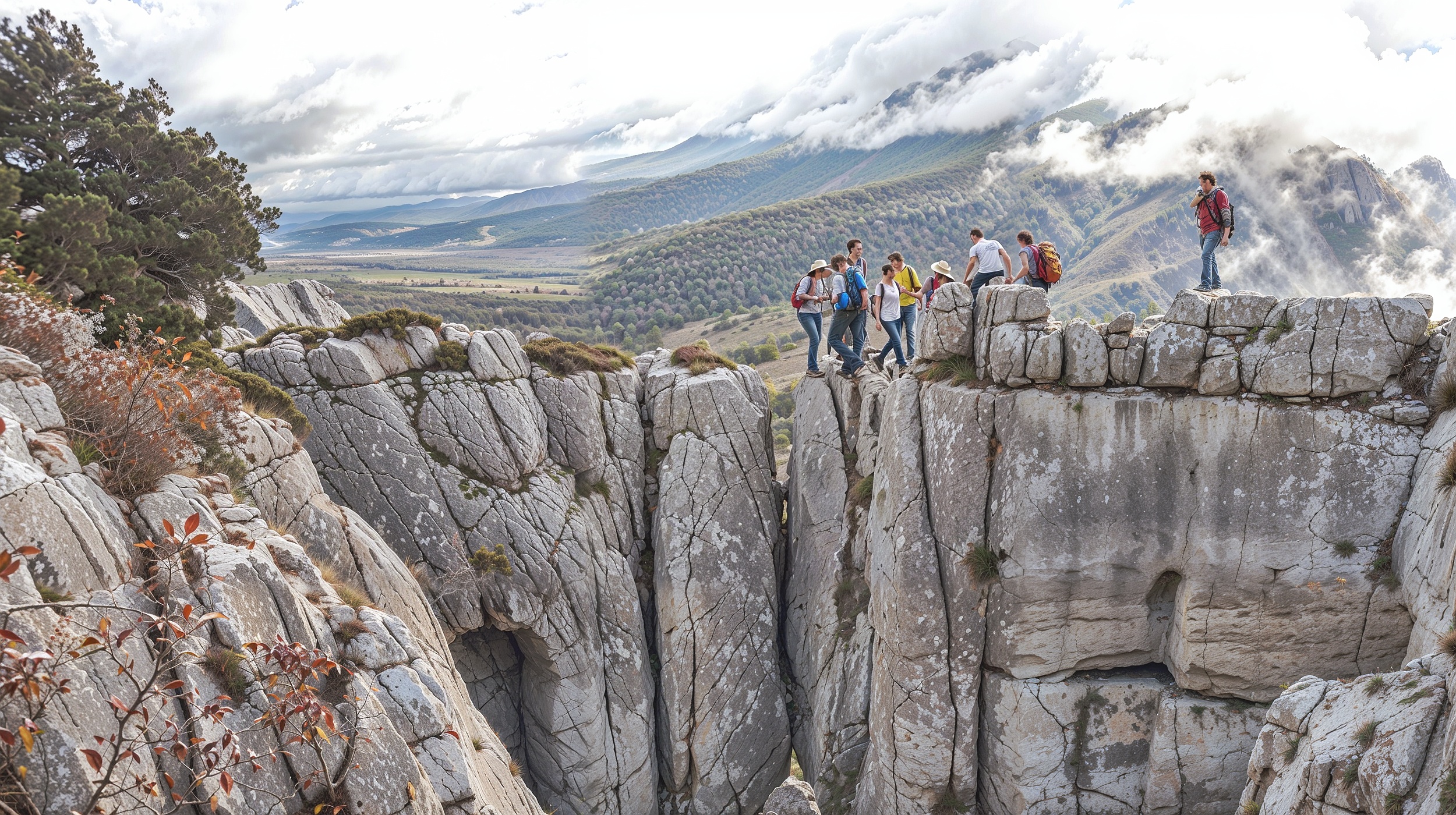
Best seasons for hiking in Montenegro
-
Spring (May-June) — Green meadows, blooming wildflowers, and refreshing streams characterize this season of renewal. Alpine meadows explode with color as snow recedes, revealing carpets of crocuses, gentians, and edelweiss. Spring hiking often means sharing the trails with few other visitors while witnessing the dramatic awakening of mountain flora and fauna.
-
Summer (July-September) — Ideal weather conditions and access to the highest points make this the prime hiking season. Long daylight hours allow for extended excursions, with temperatures generally remaining comfortable at higher elevations even when coastal Montenegro experiences intense heat. Wildlife is highly active, with numerous bird species and the possibility of spotting chamois on remote slopes.
-
Autumn (October) — Forests transform into golden and red hues, creating spectacular backdrops for photography. As temperatures cool and tourist numbers decrease, the park takes on a contemplative atmosphere perfect for those seeking solitude. Morning mist often fills valleys, creating mystical conditions as the sun gradually burns through to reveal the landscape.
-
Winter — While routes are limited to lower trails, snowshoe walks offer a unique perspective on the sleeping landscape. The stark beauty of snow-covered pines and frozen lakes presents Durmitor in its most serene state. Winter visits require additional preparation and equipment but reward adventurous hikers with a rarely-seen aspect of the national park.
Weather Considerations
Mountain weather demands respect and preparation regardless of season:
-
Temperature variations can be extreme, with differences of 15°C or more between morning and midday common during spring and autumn
-
Afternoon thunderstorms frequently develop during summer months, making early starts advisable for summit attempts
-
Wind exposure increases dramatically above the treeline, necessitating appropriate clothing layers even on warm days
-
Visibility changes can occur rapidly with fog or low cloud developing in minutes, particularly on higher routes
-
Snow patches can persist in sheltered areas well into July, sometimes requiring additional caution on otherwise straightforward paths
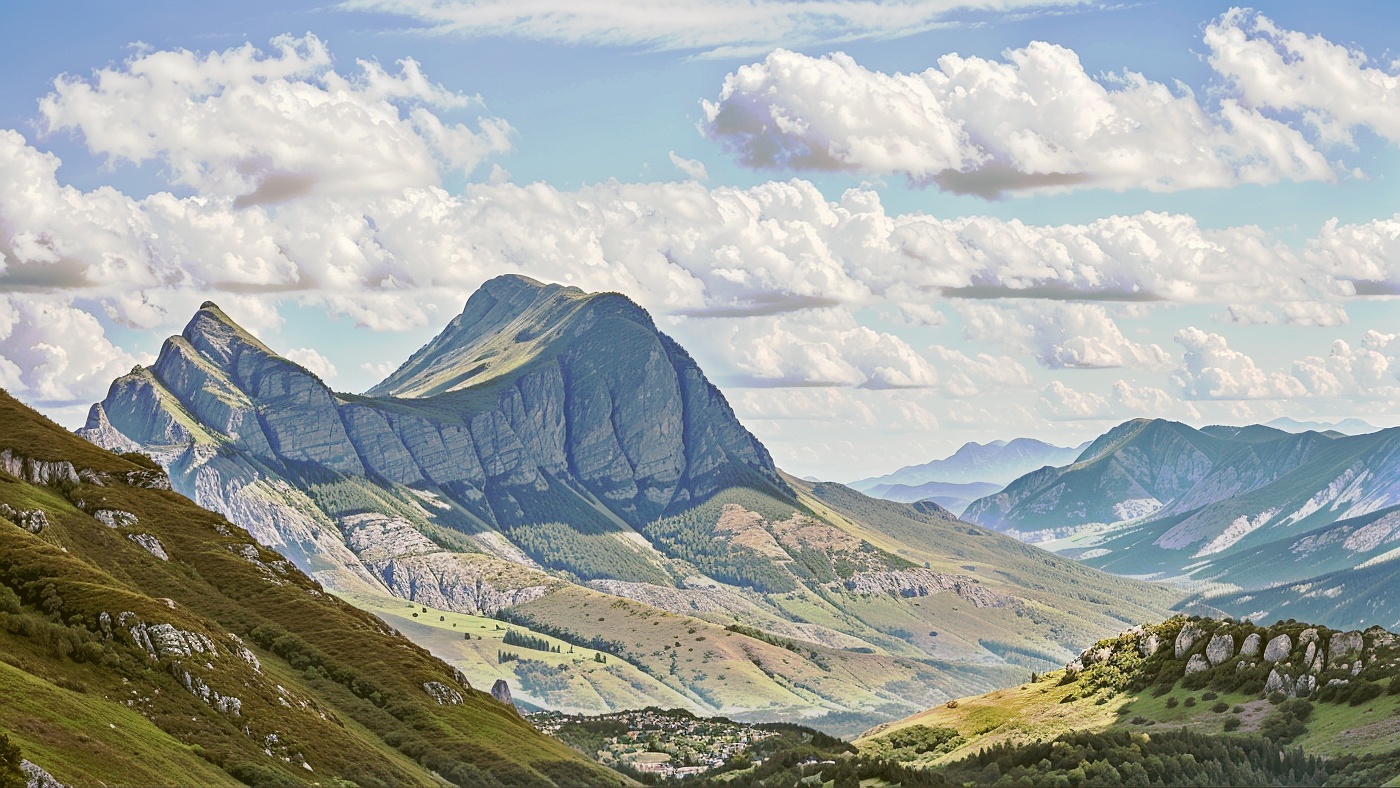
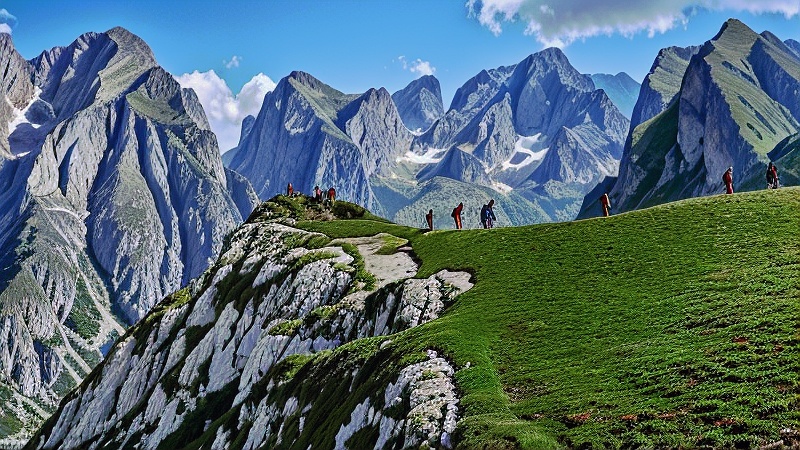
Book your unforgettable rafting experience on the Tara River — feel the adrenaline, immerse yourself in wild nature, and make memories that will last a lifetime.
Popular hiking routes in Durmitor, Montenegro
Half-Day Walks
-
Black Lake Interpretive Trail — Circle the iconic lake while learning about the unique flora and fauna from informative guides. Beyond the basic loop, this guided experience delves into the ecological relationships of the lake ecosystem, identifying rare plant species and explaining the geological processes that formed this natural wonder.
-
Forest Sanctuary Path — A gentle 5 km stroll through ancient pine forest with opportunities to spot woodland wildlife. This trail passes through stands of trees hundreds of years old, with the filtered sunlight creating a cathedral-like atmosphere beneath the canopy. Guides help visitors identify bird calls and spot signs of mammals that might otherwise go unnoticed.
-
Waterfall Trail — A refreshing route to one of Durmitor's hidden cascades, perfect for hot summer days. The path follows a mountain stream as it descends through a series of increasingly dramatic drops before culminating at a viewing platform beside the main waterfall, where the perpetual mist creates a microclimate for specialized plant communities.
Full-Day Hikes
-
Mountain Summit Experience — Guided ascents of accessible peaks with comprehensive safety support and natural history narrative. These carefully paced climbs balance the exhilaration of reaching significant summits with educational components addressing alpine ecology, geology, and cultural history of the mountain landscapes.
-
Canyon Rim Trail — Follow the edge of Tara Canyon for spectacular views into Europe's deepest gorge. This dramatic route traces the precipitous edge of the massive geological feature, with secured viewpoints extending out over dizzying drops to the turquoise river far below.
-
Seven Lakes Circuit — An ambitious day traversing varied terrain to connect several of Durmitor's most beautiful glacial lakes. This carefully designed route maximizes scenic diversity while maintaining a manageable physical challenge, allowing hikers to experience how changing elevation and aspect create distinct ecosystems around each lake.
Multi-Day Expeditions
-
Full Durmitor — A comprehensive trek with overnight stays in mountain huts or tents, covering the park's major highlights over 3-5 days. This immersive journey provides the full Durmitor experience, from forested valleys to alpine zones, with each day building upon the previous to create a deeper understanding of the mountain environment.
-
Wilderness Camping Adventure — Trek deep into Durmitor's remote sections with fully supported camping in pristine locations. Moving camp each day, this expedition reaches areas rarely seen by day hikers, with evenings spent in carefully selected sites that showcase the park's diverse beauty while adhering to strict leave-no-trace principles.
-
Hut-to-Hut Journey Sunrise or Sunset Photo Tours
Specialty Experiences
-
Sunrise or Sunset Photo Tours — Perfectly timed excursions to capture atmospheric images in optimal light conditions. These specialized hikes target specific locations where the interplay of light, landscape, and atmosphere creates extraordinary photographic opportunities, with leaders who understand both the technical aspects of photography and the unique qualities of Durmitor's light.
-
Wildlife Observation Treks — Early morning or evening hikes focused on spotting Durmitor's diverse fauna in natural habitats. These quiet, slow-paced excursions prioritize wildlife encounters, with guides skilled in tracking and spotting techniques that increase the chances of observing chamois, various bird species, and occasionally larger mammals like foxes or wolves.
-
Geological Exploration Tours Comfortable footwear and weather-appropriate clothing
Important Considerations
Equipment and Preparation
-
Comfortable footwear and weather-appropriate clothing are essential for safety and enjoyment. Proper hiking boots with ankle support are recommended for all but the easiest trails, while layered clothing allows adaptation to changing conditions. Technical routes may require specialized equipment including helmets for sections with rockfall potential.
-
A minimum of 2 liters of water per person is recommended for day hikes, with filtration options for longer expeditions. Despite numerous springs and streams throughout the park, water sources cannot always be relied upon, particularly in late summer or on higher routes.
-
Premium packages include guides, transfers from Žabljak, picnics, and equipment as needed. Professional guides not only enhance safety but dramatically enrich the experience through their knowledge of the landscape, wildlife, and cultural context of the mountain environment.
-
Guides share insights about regional geology, help spot wildlife, and tailor routes to your abilities. Their training encompasses not only safety protocols and route finding but a deep understanding of Durmitor's natural and cultural history, turning a physical journey into an educational experience.
Safety Protocols
All reputable hiking operators in Durmitor maintain comprehensive safety standards:
-
Weather monitoring with contingency plans for rapidly changing mountain conditions
-
Emergency evacuation procedures that function in remote areas without cellular coverage
-
First aid certification for all guides, with wilderness medical training for those leading technical or remote routes
-
Emergency evacuation procedures coordinated with local mountain rescue services
-
Equipment checks before departure to ensure all participants are adequately prepared
Conservation and Ethics
Durmitor National Park's protected status requires visitors to adhere to strict conservation principles:
-
Stay on designated trails to prevent erosion and protect fragile alpine vegetation
-
Pack out all waste including biodegradable items that decompose slowly at high altitudes
-
Observe wildlife from a distance without feeding or disturbing animals
-
Leave natural objects in place including flowers, rocks, and deadwood that provide habitat
-
Cultural Integration What makes hiking in Durmitor truly special extends beyond the physical activity itself. The experience encompasses several dimensions that together create lasting memories and profound connections:
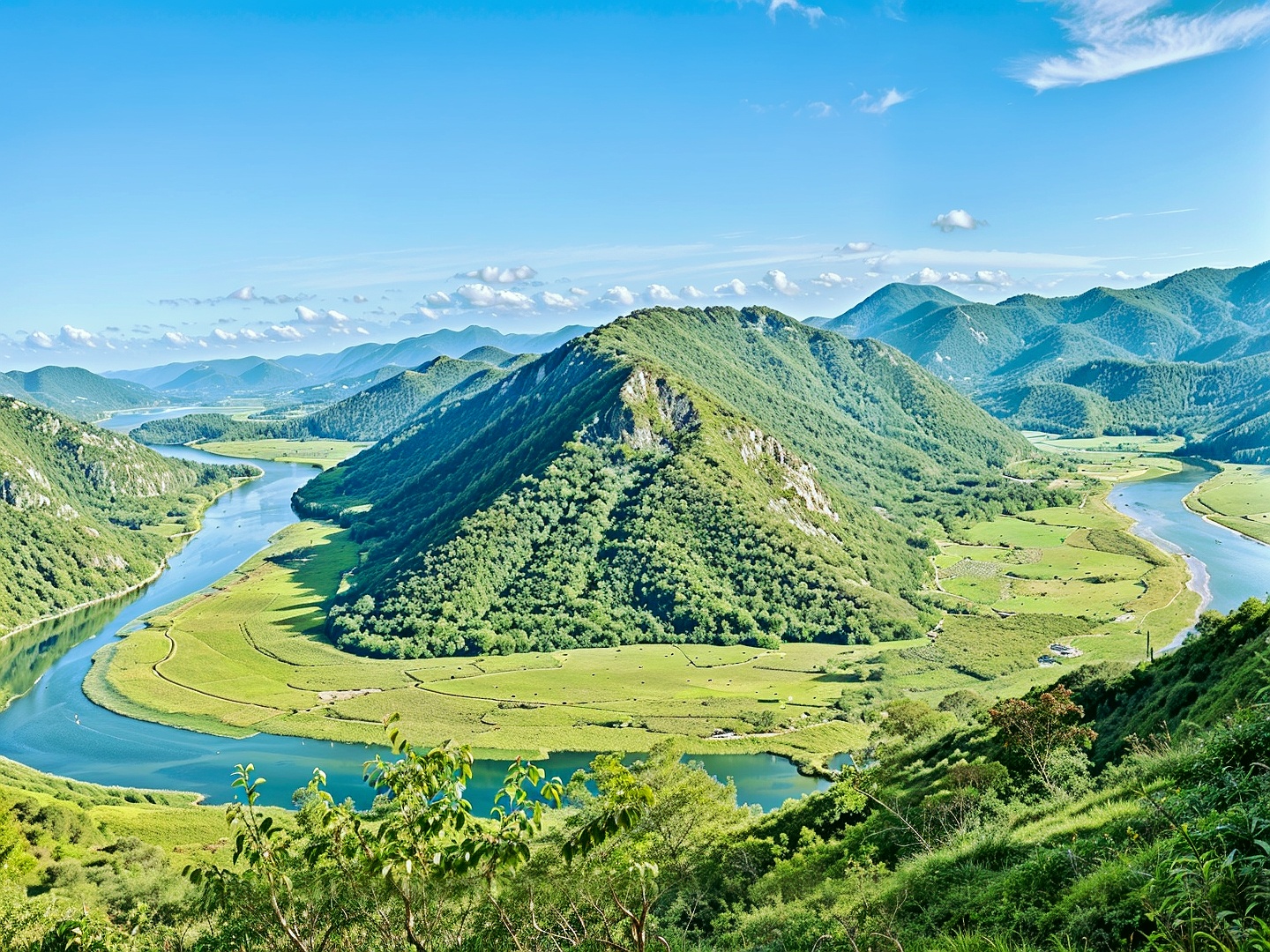
The Durmitor Experience: Beyond the Hike
What makes hiking in Durmitor truly special extends beyond the physical activity itself. The experience encompasses several dimensions that together create lasting memories and profound connections:
Cultural Integration
The mountain landscape of Durmitor isn't merely a natural environment but a cultural one, where traditional agricultural practices like seasonal livestock movement to high pastures (known as "katuns") continue alongside tourism. Many hiking routes pass these summer settlements, where interactions with local shepherds offer glimpses into a way of life that has evolved in harmony with the mountains over centuries.
Guides often integrate stories of local folklore, historical events, and traditional ecological knowledge into their commentary, helping visitors understand how the mountains have shaped human communities just as humans have influenced the mountain environment.
Environmental Awareness
Hiking through Durmitor's varied ecosystems creates firsthand appreciation for the importance of conservation efforts. The visible transitions between forest, alpine meadow, and bare rock zones demonstrate the concept of ecological succession, while encounters with endemic species highlight the region's biodiversity significance.
Many visitors report that their Durmitor hiking experience strengthened their commitment to environmental protection, having witnessed both the power and fragility of mountain ecosystems.
Personal Transformation
The physical challenges of mountain hiking, particularly on more demanding routes, often produce psychological benefits extending well beyond the excursion itself. Participants frequently describe feelings of accomplishment, improved perspective on everyday problems, and renewed appreciation for simple pleasures like clean water, fresh air, and natural beauty.
The combination of physical exertion, natural beauty, and temporary disconnection from digital distractions creates ideal conditions for mindfulness and reflection that many find profoundly restorative.
Ready for Adventure?
Hiking in Durmitor offers the opportunity to disconnect from urban hustle, walk paths leading to summits, and experience true freedom. Regardless of your fitness level, you'll find your own route to silence, beauty, and inspiration among these remarkable mountains.
The experience of moving through Durmitor's landscapes at walking pace allows a depth of connection impossible through other forms of travel. Each step reveals new details—a delicate alpine flower, the changing texture of rock formations, the subtle sounds of wind through different types of vegetation. These accumulated observations create a rich, multi-sensory understanding of the mountain environment that remains vivid long after returning home.
Whether seeking physical challenge, natural beauty, photographic opportunities, or simply quiet contemplation away from everyday concerns, Durmitor's varied trails provide pathways to experiences that resonate on multiple levels—from the simple pleasure of movement through beautiful surroundings to deeper connections with the natural world that has shaped Montenegro's unique character.
Book a tour and discover Durmitor step by step.
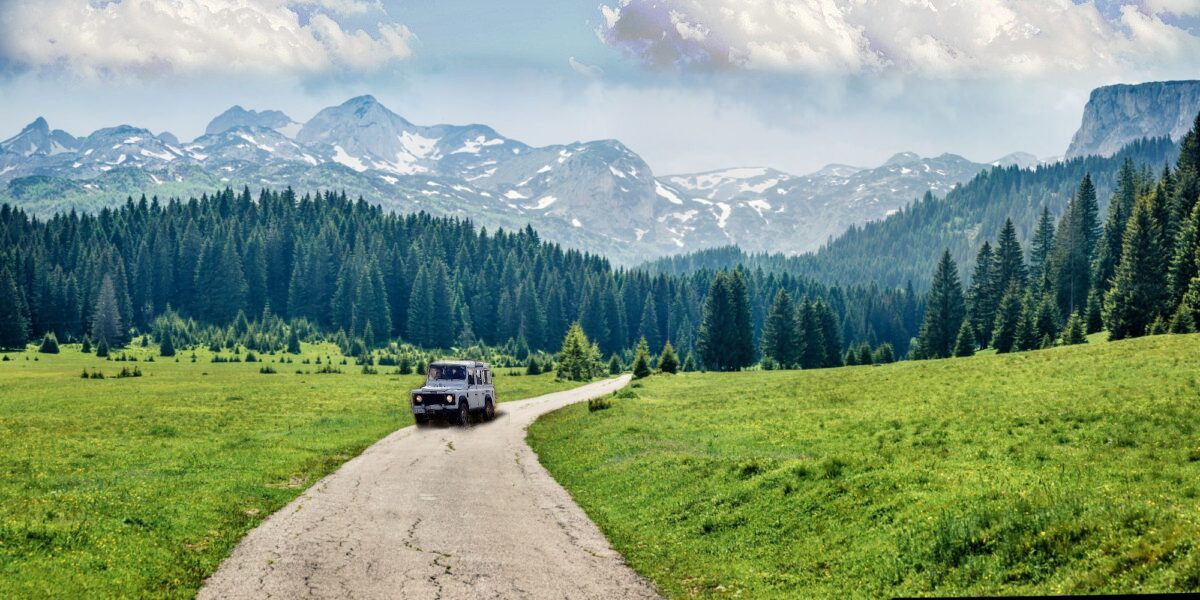
Book an unforgettable adventure on the Tara River — crystal-clear waters, breathtaking canyons, and pure adrenaline await you in Montenegro’s mountain paradise.



